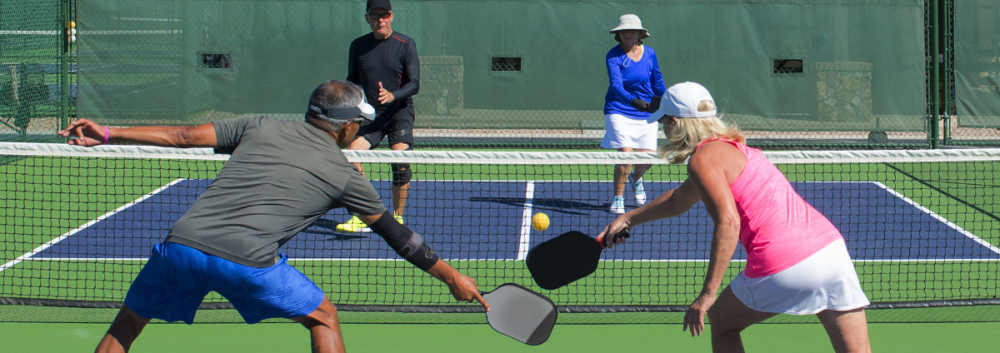The game of pickleball can be summed up by the three Ps – positioning, patience, power. All are crucial aspects of the game that are difficult to master without drills.
Power is becoming increasingly important as the game has evolved at the higher levels, for a number of reasons. Two reasons are the influx of high level tennis players at the top of the game and the increasing use of top spin. At the lower levels powershots will often win rallies, either directly or by producing errors and weak returns. This is OK as far as it goes but it encourages the neglect of the soft game that is essential for players as they rise through the higher intermediate level 3s and into the 4s. There, the ‘bangers’ will find their power shots are returned without too much difficulty, often with ‘interest’. And in any case they will find they are given very few opportunities to use their power as the better players defuse their power game with their soft game and positioning. Positioning is a key factor in playing defensively against power players and the ability to equalise a rally and gain an attacking position.
Which brings us onto positioning. If power won’t win then the other strategy is to move your opponents around until a hole in their defense appears that you can attack. This is the importance of the soft game. It can keep you in the rally if you are on the defensive, for instance a reset into the opponents” kitchen, or push them out of position leaving a space to attack or at least get an uncontrolled weak return. Strong players can reset into the kitchen from anywhere on court. Resets enable a team in defence to neutralise the rally by advancing to their own NVZ line. Once both pairs are at their kitchen lines it then becomes a battle of patience. The team that wins most points from this situation, the dinking battle, is usually the one with the best positioning, footwork and patience, in addition to reliable and consistent dinks of course. Very often teams that are out-dinked are the less mobile team and/or with the shortest attention span!
Which brings us to patience. If you watch some of the dinking rallies of professional teams, the necessity for patience and concentrated focus is obvious (for the players and the spectators). But patience isn’t just required for extended dinking rallies. Patience is often required throughout a rally. Going too hard at an overhead when the ball isn’t in the right place or when you are on the move and not stable, or when you can’t resist showboating, is more likely to lose the point than win it. Better to go for medium pace targeted shot with accuracy rather than with 50/50 high risk pyrotechnics. If your opponents are at the back of the court in a good defensive position, solid shots to their feet are often best to keep them back there and wait for a better opportunity. Down the middle can cause some confusion and lead to the wide angles being exposed. When wider spaces are exposed reduced power accurate shots that keep the ball in the court will often win the point or get a scrabbled weak response that leave spaces elsewhere when the scrabbler’s partner hasn’t moved to cover. The high risk video highlight smash will win some points but will probably lose more. Patient pressure with accurate soft or half power shots will always win more points in the long run.
So, patience, positioning and power, all of which can be improved more rapidly with drills rather than just playing games. Patience needs drills for the soft game, working on focus and moving your opponents around. Positioning means knowing how to read a rally and automatically moving to the best position at any given moment. This has to be moving with your partner as a coordinated unit. It also it means good footwork. Power (and everything else) is all about good technique and judgement; when to turn it on and when to hold it back.
Drills are available to help develop all these crucial aspects of the game.

